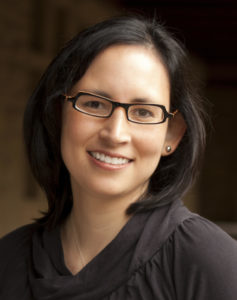Speakers

Allison M. Okamura
Allison M. Okamura is a professor in the Mechanical Engineer- ing department at Stanford University, holding a courtesy appointment in Computer Science. Before Stanford, she was a professor and Vice Chair of Mechanical Engineering at Johns Hopkins University. Currently, she’s the Editor-in-Chief of the journal IEEE Robotics and Automation Letters. She has held key editorial roles in various IEEE publications and has received numerous awards throughout her career, including the 2020 IEEE Engineering in Medicine and Biology Society Technical Achievement Award. Her research interests include haptics, teleoperation, virtual environments, medical robotics, and more.

Heather Culbertson
Heather Culbertson is a Computer Science Professor at the University of Southern California, specializing in haptic technology. Her research focuses on creating realistic touch experiences with haptic devices and their applications in virtual reality, medicine, and human-robot interaction. She has received prestigious awards, such as the NSF CAREER Award and the IEEE Technical Committee on Haptics Early Career Award, for her contributions to the field. Currently, she serves as the Publications Chair for IEEE Haptics Symposium.

Karon MacLean
Karon MacLean is a highly respected Computer Science Profes- sor at the University of British Columbia. Her extensive background in biology and mechanical engineering, with degrees from both Stanford and MIT, has enabled her to make significant contribu- tions to the field of human-computer interaction, robotics, and haptics. As the head of the Sensory Perception and Interaction (SPIN) Research Group, Dr. MacLean’s research focuses on how people interact with technology through touch and emotion, cov- ering areas from robotics to touch screens. Her work has earned her numerous accolades, including the NSERC Accelerator (2013), Charles A. McDowell Award (2008), and IEEE Fellow 2022, CRC Chair 2022, CHI 2020 Honorable Mention Award, among others. Dr. MacLean’s work has played a pivotal role in advancing the understanding of human-computer interaction and has helped to drive the development of new technologies that better serve the needs of users.